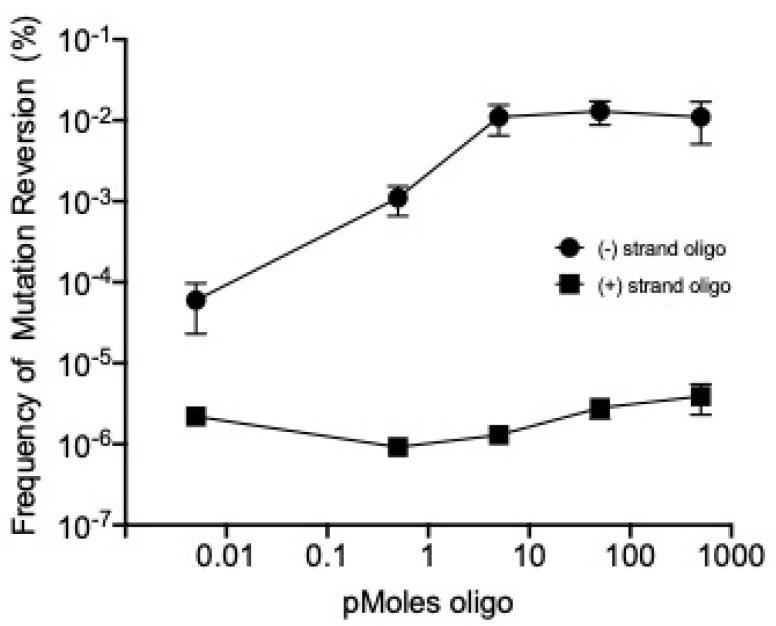Figure 4.
Recombineering corrects a point mutation after infection by a T7 phage particle. The lagging strand single-strand oligonucleotide (ARP293) of 71 nucleotides in length was used as a substrate during recombineering to correct the phage mutation T7 g17am267. The amber suppressor strain ARP3771 was infected with the T7 g17am267 mutant phage at a multiplicity of infection of ~5 phage per bacterium. Cells were either induced to express Red function and then electroporated with the leading and lagging strand oligonucleotides ARP292 and ARP293 at several oligo concentrations (see x-axis). Electroporation reactions were outgrown at 37 °C in SOC media until lysis. Frequency of T7 g17+ recombinants (y-axis) was calculated by the following equation: (recombinant phage titer on E. coli B)/(total phage titer on E. coli B40 supD). Values represent an average of at least three biological replicates. Lysates, in which no lagging strand oligo DNA was added, revealed a reversion frequency of ~1.1 × 10−6 (±4.1 × 10−7).

